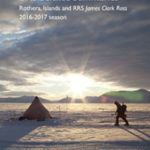Quantifying the daily economic impact of extreme space weather due to failure in electricity transmission infrastructure
1 January, 2017 by Richard Horne
Extreme space weather due to coronal mass ejections has the potential to cause considerable disruption to the global economy by damaging the transformers required to operate electricity transmission infrastructure. However,…